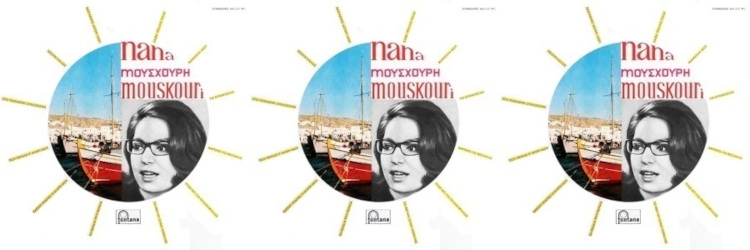
My favourite Greek Songs
Collection 1

FIRST OF THREE INTERNATIONAL ALBUMS IN GREEK
After several reports on French and English albums, I’m up to the Greek discography. For that one, I choose those which had an international release. Like all the others, I have listened to them hundreds of times. The first album presented in that article was released in France in October 1963. Its realization was planned upon Nana’s arrival in the City of Light two years earlier. But it was quite normal for her record company to make her record in French first. Its title varies depending on the country and the language spoken there. The original is titled "Mes plus belles chansons grecques". Let's review here its content, its different covers and its journey.
1) THE CONTENT
As its title suggests, a selection had to be made before determining its content: twelve songs including eight by Manos Hadjidakis and four by Mikis Theodorakis, the two greatest composers of the time.
|
Side 1
01- Kathe trello pedi |
Side 2
01- Vassilepses asteri mou |
|
The album, produced by Gérard Cote, is the first to which André Chapelle collaborated. He was a sound technician. The recording made in high-fidelity stereo and the rich orchestration of Jacques Denjean (signed under the pseudonym Iakobos Dentjos) make us rediscover these titles. Most of Hadjidakis’s are among Nana’s early successes in Greece. Let us mention a few.
"Hartino to fengaraki" (The paper moon), her first song written by the poet Nikos Gatsos. "Kapou iparhi i agapi mou" (My Love is somewhere) which revealed her to her compatriots at the Greek Song Festival, just like "To kyparissaki" (The little cypress) which she will record in four other languages. There is also "Ta pedia tou Pirea" (The children of Piraeus), the main song of the film "Never on Sunday". However, it is astonishing that "San sfirixis tris fores", the original version of "Weisse Rosen aus Athen" which made her star in Germany, is not there. Interestingly, there is an unreleased song: "Manoula mou" (My dear little mother).
The first four songs on side 2 come from the work "Epitaphios" set to music by Theodorakis on texts by the poet Yannis Ritsos. It’s about a mother's complaint before her murdered son.
Even if they are covers, three tracks stood out from this album: "To fengari ine kokkino" (The moon is red), "Kathe trello pedi" (Every crazy child) and of course "Ta pedia tou Pirea" (The children of Piraeus).
|
TO FENGARI INE KOKKINO It’s the story of two lovers who meet on the riverside during the full moon. This new version, more rhythmic, highlights her voice and the instruments. In France, it was a success and Nana performed it in all her singing tours. Moreover, the song was released on scopitone (a 16 mm musical film that could be viewed on the screen of a jukebox). Nana appears before an illustration of the Acropolis. To mark the rhythm, she claps her hands and does some dance steps to accompany a couple of dancers. |
KATHE TRELLO PEDI Without having been one of her first great success, this song stood out as it begins this opus. In addition, her new arrangements have undoubtedly contributed to make of it an essential. Moreover, Nana sang it in all of her concerts during the 1960s and 1970s, taking care to explain that this is a young fool locked in his loneliness. |
 |
|
TA PEDIA TOU PIREA The most famous of Greek songs has been covered by the great performers in all languages. Nana re-recorded it with the original lyrics that had been composed with her voice while Hadjidakis played it on the piano. This new version will be included in several compilations. And in her concerts, her audience expects her to sing it. That’s why she often offers it as an encore. On stage as on television, it happened to her to sing it while her musicians dance. |
2) THE DIFFERENTS COVERS
The LP, pressed in 13 countries, has no less than nine different covers.
THE ORIGINAL The original cover, first released in France, is the most beautiful for its graphic design. It’s white and two photos are assembled in the shape of a circle. On the left, boats parked in a port. On the right, a black and white photo of Nana and her name written in Latin and Greek alphabet. With the titles, in yellow, disposed around, it looks like a sun. On the back, there is no illustration, only the titles and texts in French and Greek. For the rest of Europe, an edition was released with the texts written in Greek, English and German.
|
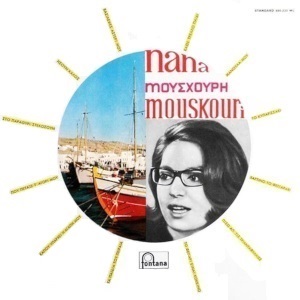 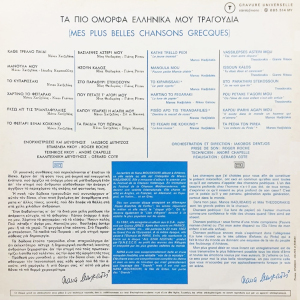 |
|
ENGLAND The English were the first to know this recording with another cover. On "My favourite Greek Songs", there is an image of the Acropolis seen from Philopappos Hill and a round photo of Nana without her glasses. On the back, the song list and the same two texts in English. |
HOLLAND
In Holland, to illustrate "Greek Songs", three different photos were used. The first two editions are from the "International stereo" series. First there is the one with Nana with shorter hair. The second, on a blue background, with a close-up of her face on the right. Both have an identical back cover, with details of the recordings, a biographical text and a photo of Nana.
And the third, purple, with a super close-up of Nana. It bears the title "Greek Songs by Theodorakis & Hadjidakis". This one is the most used in other countries. On the back cover, nothing more than the song list.
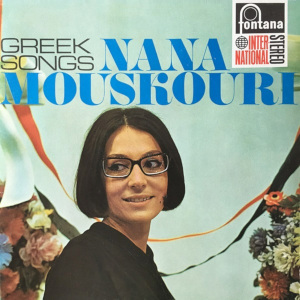


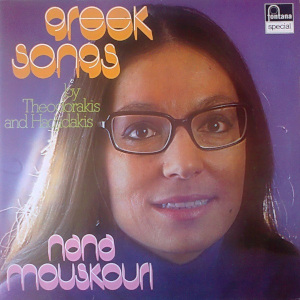
SOUTH AFRICA For its first edition, the South African firm used the English cover with different colors. For its second edition, it kept the same title and the back is almost identical. However, the cover is totally different with a black and white photo of Nana in profile. |
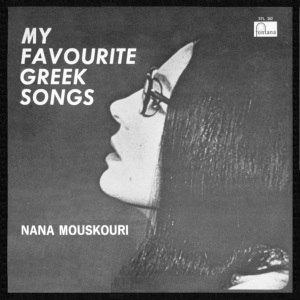 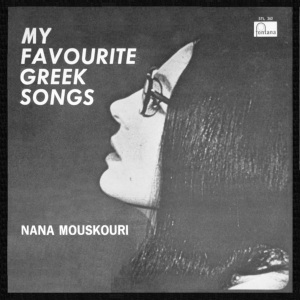 |
|
AUSTRALIA In the 1970s, Australians got a new edition under Summit label. On both sides, the same exclusive photo on a light background with the names and titles in red and pink. |
JAPAN
In 1974, on the occasion of her first visit to Japan, the LP appeared with the French title and an original cover: image of Nana on a film and a photo of a port. On the back, a photo, titles, text in Japanese and four recommended LPs.
Four years later, the album was reissued with another cover. On the front cover is a photo montage of Nana before the town of Mykonos. On the back, a view of the Acropolis with the titles and text in Japanese. For each of these editions, there is an insert with the lyrics.
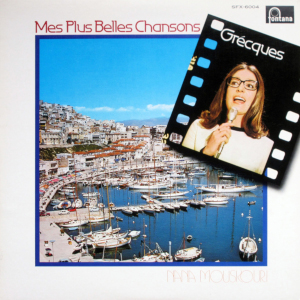
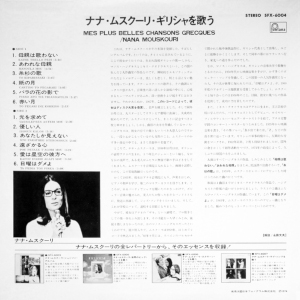
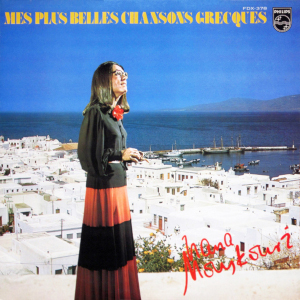
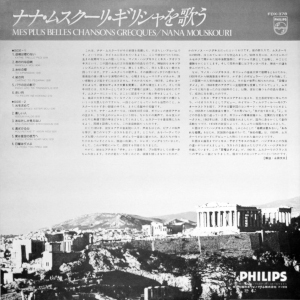
3) ITS JOURNEY
AWARDS The month following the release, Nana was invited to Paris city hall to be honoured by the Académie du Disque Français. Her album obtained the Grand Prix of Musicology for Folklore. Also rewarded for their recordings: Sheila and Claude François. In 1974, it was one of her 19 albums certified gold in Australia. |
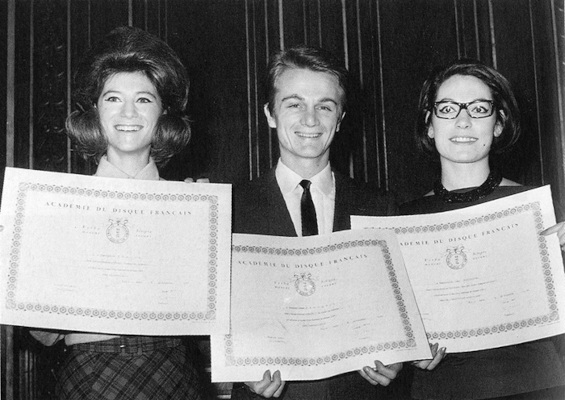 |
|
EPs In addition, it generated an EP in France "Chante en grec", in South Africa "Nana's favourite Greek Songs" and in Yugoslavia "Moje najlepse grcke pesme". Each is distinct, with "To fengari ine kokkino" as main song. In all, eight of the twelve songs have been released on 45 rpm discs. |
WITNESS ALBUM
Also, we could qualify it as a witness album of her early years in France, because for a long time it was the only recording available from the period 1961-1964. At that time, she was mostly popular for her Greek songs. It is true that no one other than Nana could sing them as well.
CD
From 1996, the album was released on CD. First, in Greece, with a different graphic design: without the sunrays but the title with the shape of a wave. In 2004, as digipack CD with eight bonus tracks in her French Integral. And, in France, in 2011 and 2014. Under Forlane label, it’s entitled "Chante la Grèce" and offers us a photomontage with the island of Santorini for its cover. That of RDM Édition highlights the mention "Grand Prix National du Disque".
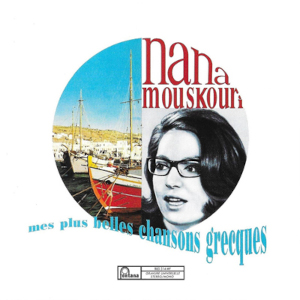
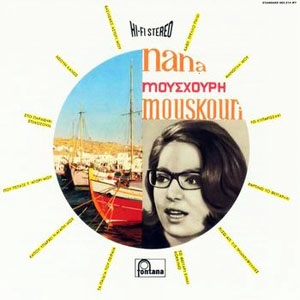

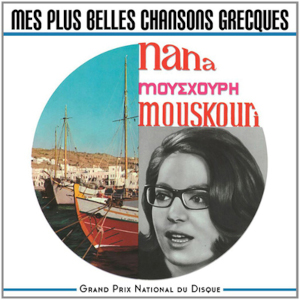
JUSTIFIED AND SUCCESSFUL RE-RECORDINGS
Each recording represents an immortalized emotional moment and leaves marks. That selection of twelve songs allowed the international public to discover a complete work of Nana in her mother tongue. Since then, it made its way, helped us better understand her origins and remains a reference. Even if we don’t know Greek, it is worthwhile to let ourselves be charmed by the music, the interpretation and the sound of the language. And with such acoustics, we can say without reservation that these re-recordings were totally justified and successful. Moreover, it was not limited to an album and I intend to follow up on it in a future article.